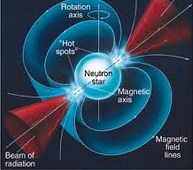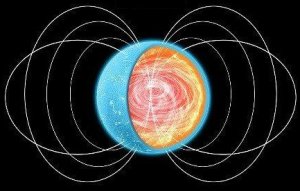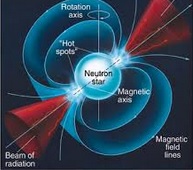

Sometimes life seems simple. Night is night, and day is day. Gravity keeps you on the ground and water makes you wet. The Earth is solid and fog is not. These are the simple truths of life that help us make order from the chaos—they keep us sane. However, many of the things that we take for granted are a lot more complex than they first appear.
Take, for example, the most basic states of matter (we’ll use water to help us flesh out this example). First, you have your solids, like the ice that you skate across in the winter. Then, you have your liquids, like the water that you drink on a hot day. Lastly, you have your gasses, like the fog the drifts up from the lake on a warm evening.
Generally speaking, the state of matter depends in how packed the particles are and how freely they move about. Take the extremes: When in a gaseous state, particles move about one another and there is a lot of free space. Conversely, in solids, particles are locked in with one another and the space between is very limited. If you completed high school, this is probably something that you went over in your science class. But this is not the whole story…
Case in point, scientists recently discovered evidence of a new form of matter: A rare state dubbed “nuclear pasta,” which appears to exist only inside ultra-dense objects called neutron stars.
“Such conditions are only reached in neutron stars,” states José Pons of Alicante University in Spain. He continues by explaining that these are, “the most dense objects in the universe besides black holes” (so dense, that their crusts have been found to be billions of times stronger than steel). Thus, nuclear pasta exists here because, in these exceedingly dense objects, the nuclei of atoms are crammed together so tightly that they arrange themselves in patterns akin to pasta shapes.

So, how did the researchers find this state of matter in stars that are light-years away? Well, it seems that these formations are likely responsible for limiting the maximum rotation speed of the stars. Consequently, researchers were able to use the spin rates of a class of neutron stars called “pulsars” to detect evidence of this nuclear pasta. Pulsars emit light in a pair of beams that shoot out like rays from a lighthouse. As the pulsars spin, the beams rotate in and out of view, making the stars appear to flash (or “pulse”) on and off. This pulse allows astronomers to calculate how fast the stars are spinning. Researchers have observed dozens of pulsars, but have never discovered one with a spin period longer than 12 seconds. But the pasta matter could explain the absence of pulsars with longer spin periods. The researchers realized that if atomic nuclei inside the stars were reorganizing into pasta formations, this matter would make it harder for electrons to travel through the material. This, in turn, would cause the stars’ magnetic fields to dissipate much faster than expected.
Normally, pulsars slow their spin down by radiating electromagnetic waves, which causes the stars to lose angular momentum. But if the stars’ magnetic fields are already limited, as would happen with pasta-matter, they cannot radiate electromagnetic waves as strongly, so they can’t slow down.
Ultimately, this keeps the pulsars stuck at a minimum spin speed of 12 seconds.